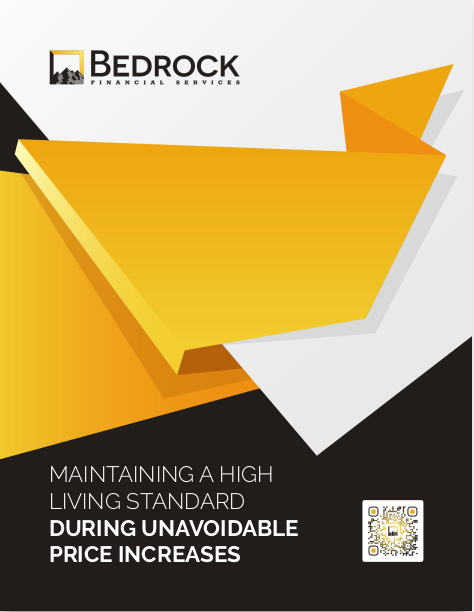Key Takeaways
-
Client retention in 2025 hinges less on price incentives and more on consistent, strategic communication that builds trust and relevance throughout the policy lifecycle.
-
Financial professionals who invest in personalized, value-driven interactions between renewal dates see longer retention, increased referrals, and more profitable relationships.
Why Client Retention Needs a New Playbook
Retention is no longer a passive outcome of good service or low rates. In 2025, the competition for your client’s attention is fierce—every email, call, and silence is either reinforcing your value or nudging them toward the door. What keeps them? The story you tell between the policy dates.
Discounts, while attractive, don’t build loyalty. They offer short-term satisfaction without establishing long-term trust. Clients stay when they feel seen, heard, and helped in moments that matter—not just during renewals or claims.
The Timeline of Trust: What to Say, When It Matters
Let’s map out the calendar between policy start and renewal. Most financial professionals focus on two key dates: policy purchase and renewal. The months in between? Often radio silence.
This is where the real retention magic happens. Consider a 12-month policy cycle:
Month 1: Onboarding With Purpose
Your welcome email isn’t a formality—it’s your first opportunity to set the tone. Make it clear what your client can expect from you throughout the year. Offer a summary of their coverage or services, and introduce any digital portals or tools they can use.
Include:
-
A clear thank-you message that reinforces their smart decision.
-
A brief roadmap: what’s next, how they’ll hear from you.
-
One action: log in to the portal, join a webinar, download a resource.
Month 2–3: Value Check-Ins
This is your chance to offer unexpected value. Share a quick update about something relevant: an industry change, a seasonal tip, or a short checklist. Keep it tied to their goals.
You can:
-
Share insights into upcoming tax deadlines or financial planning reminders.
-
Offer a coverage optimization quiz or policy review.
-
Ask one question to learn more about their situation—without selling anything.
Month 5–6: Personal Connection, Zero Pitch
This is when many clients forget who you are. Send something personal but not intrusive. A birthday message, a seasonal greeting, or a local event highlight can go far.
The goal here is to:
-
Keep your name top-of-mind without demanding anything.
-
Position yourself as a relationship builder, not a transaction processor.
-
Invite engagement through small actions—reply, share a preference, or update info.
Month 8–9: Pre-Renewal Prep
Here’s where you warm up the renewal conversation. Don’t wait until the week before. At this point, your client should feel informed, not blindsided.
Suggested actions:
-
Start a light-touch coverage check-in: “Have your needs changed this year?”
-
Offer education on possible changes in regulations, inflation, or available options.
-
Remind them what they have now, what it covers, and what’s missing.
Month 11: Renewal Recommendation
Instead of just sending a renewal reminder, position it as a recommendation. Explain why their current plan still works—or why a change may be smart.
Be sure to:
-
Personalize the message with what’s changed in the client’s life or in the market.
-
Offer side-by-side options if available.
-
Include a clear path to renew, ask questions, or book a call.
Month 12: Gratitude + Forward Focus
Celebrate the end of the cycle with a thank-you message. But don’t stop there. Lay the groundwork for year two.
Wrap with:
-
A note of appreciation.
-
A preview of what you’ll be doing in the coming year.
-
A request for a referral or testimonial, if appropriate.
The Words That Make Clients Stay
Retention isn’t just about frequency—it’s about language. Here’s how to say more with less:
Speak to Goals, Not Just Coverage
Clients don’t buy policies; they buy peace of mind, protection for their families, and financial security. Reframe your language around what matters to them:
-
Instead of: “We’ve attached your updated homeowners policy.”
-
Try: “Here’s how your coverage protects the investment you’ve built.”
Acknowledge Life Changes
Life happens. Show that you’re paying attention. Whether it’s a move, a new baby, or a job shift, check in to see if coverage still fits.
Example: “Have any big changes occurred recently? We want to be sure your plan still fits your life.”
Simplify the Complex
Insurance and financial products can be intimidating. Break down updates, changes, or recommendations into plain language. Use analogies, visual summaries, or bulleted highlights.
Invite Conversation, Not Just Action
Instead of always directing—”Book now,” “Download here”—try inviting:
-
“Curious about how this update affects you?”
-
“We’re here to review your options together—just reply to this email.”
Retention as a Metric: What to Track Between Dates
If you’re only tracking retention at renewal, you’re missing opportunities. Here are metrics that show how well your between-date strategy is working:
1. Email Engagement
-
Open rates above 40% signal relevance.
-
Click-through rates indicate value-driven content.
-
Replies show trust and openness.
2. Portal or App Logins
Are clients interacting with their account, checking coverage, or using tools? Engagement equals stickiness.
3. Preference Updates or Info Changes
When clients update contact info, preferences, or household changes, they’re signaling trust.
4. Referral Behavior
Even before renewal, clients referring others means they trust you. Ask for feedback quarterly to spot satisfaction patterns.
What Gets in the Way of Better Retention
Even the best professionals fall into common traps. Awareness is your first defense.
Silence After Sale
The client shouldn’t hear from you only during claims or renewals. Silence reads as indifference.
One-Size-Fits-All Messaging
Mass emails may be efficient, but they’re not effective. Tailor content based on age, life stage, product type, and communication preferences.
Transactional Mindset
If every message has a sale at the end, clients stop listening. You don’t need a CTA in every communication. Sometimes, presence is enough.
Overload of Industry Jargon
Using internal terms or acronyms without explanation alienates rather than informs. Keep it human.
The Real ROI of Consistent Communication
Client retention isn’t just about stopping churn—it’s a revenue multiplier. Here’s what consistent communication between policy dates really gives you:
-
Higher cross-sell potential: Engaged clients are more likely to explore additional coverage.
-
Stronger renewal conversion: No scrambling or hesitancy at year-end.
-
Better referrals: Clients who feel known are quicker to recommend.
-
Less time spent fixing confusion or dissatisfaction.
Client loyalty in 2025 is not bought with a discount. It’s earned one thoughtful message at a time.
Build Client Loyalty With Every Message
Your success hinges not just on what you offer, but how you communicate it—especially when there’s no urgent reason to reach out. Every touchpoint between policy dates is a chance to demonstrate your relevance, care, and credibility.
At Bedrock Financial Services, we help professionals like you automate meaningful communication, refine your message, and keep clients engaged throughout the year. We offer CRM tools, client engagement templates, and expert strategy support designed specifically for your workflow.
If you want retention strategies that work between the dates—without adding more to your plate—sign up with us today.







